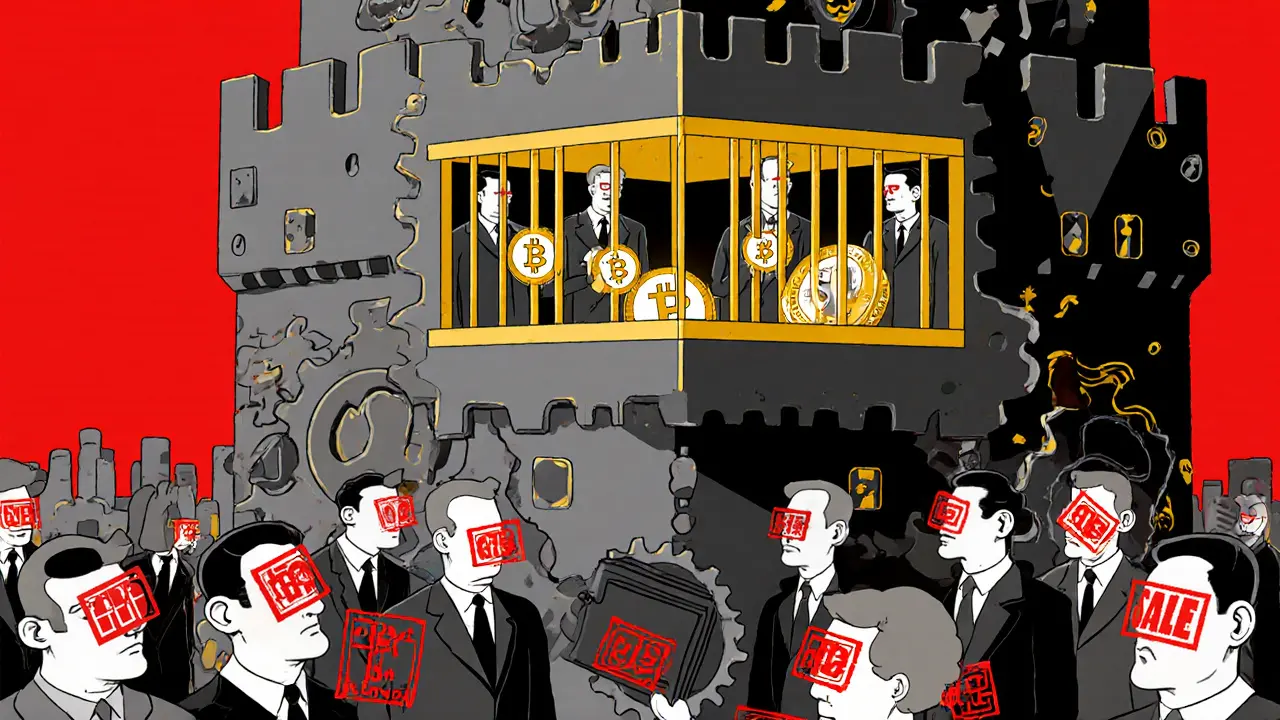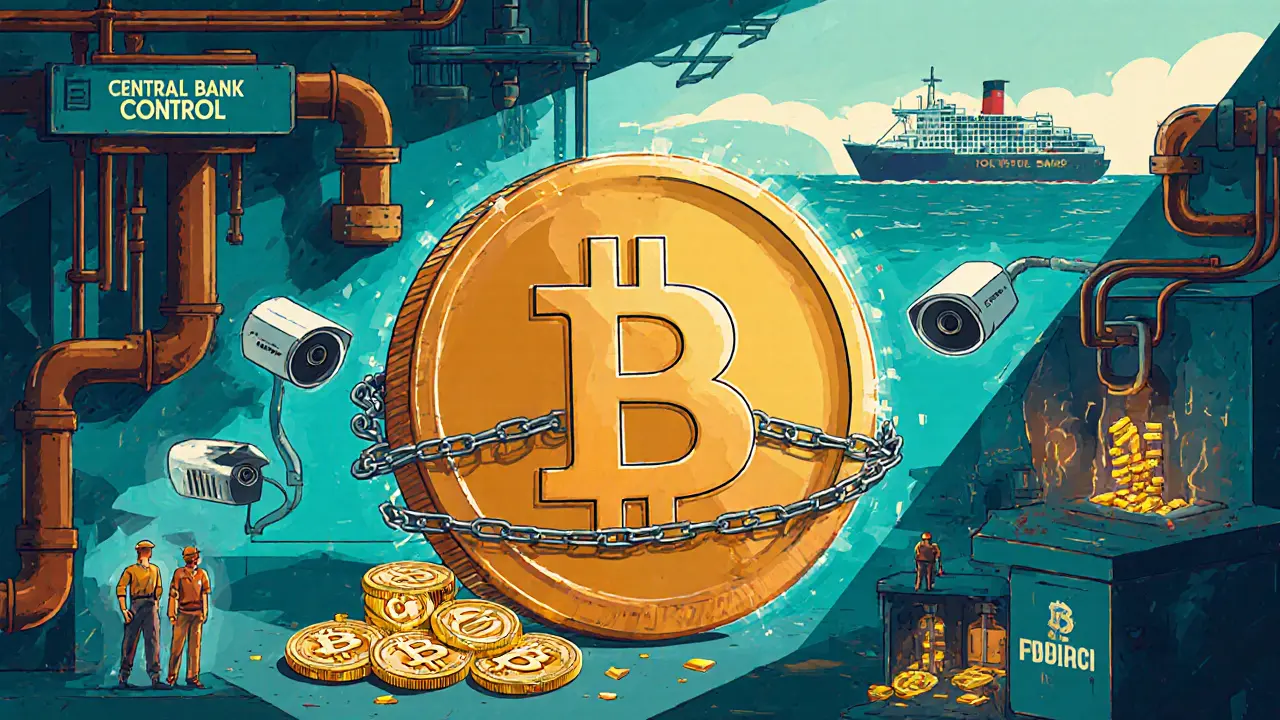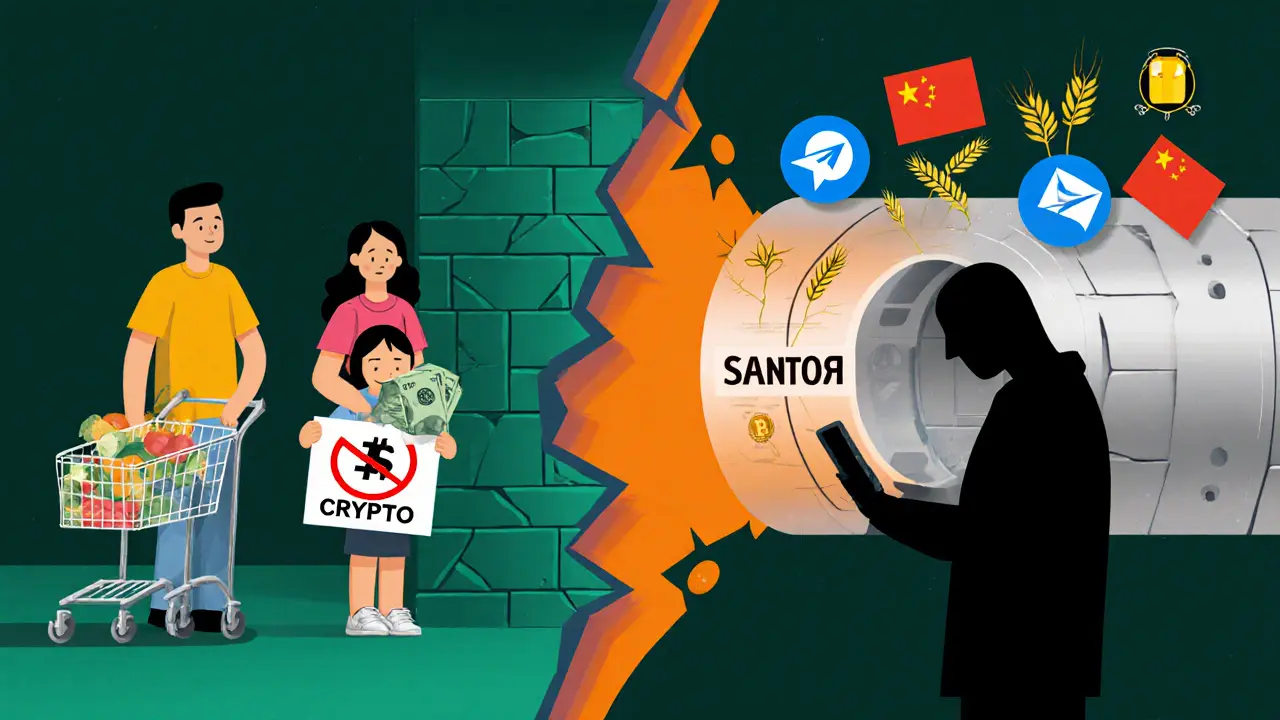Legal Status of Cryptocurrencies in Russia: What’s Allowed and What’s Banned in 2025
 Dec, 26 2024
Dec, 26 2024
Russia Crypto Investor Eligibility Calculator
Check Your Eligibility
The Bank of Russia requires investors to have at least ₽100 million in assets and ₽50 million in annual income to legally trade crypto derivatives in Russia. Find out if you qualify.
Results
Only 0.02% of Russian households meet the criteria (₽100M assets + ₽50M income).
What qualified investors can do:
- Trade crypto derivatives
- Invest in tokenized assets
- Use Bitcoin for international trade settlements
What qualified investors cannot do:
- Use crypto to pay for domestic goods/services
- Convert crypto to rubles for spending
- Use it as a payment method in Russia
As of 2025, owning cryptocurrency in Russia is legal-but using it to pay for coffee, rent, or even a new phone? That’s still a crime. The country has built a system where only the richest investors can legally touch crypto, while everyone else walks a tightrope between curiosity and legal risk. It’s not a ban. It’s a cage-with gold-plated bars for the elite.
Only the Super-Rich Can Trade Crypto Legally
If you want to buy Bitcoin or Ethereum in Russia without breaking the law, you need to be part of an exclusive club. The Bank of Russia set the bar at ₽100 million in securities and deposits, plus ₽50 million in annual income. That’s about $1.1 million in assets and $550,000 in yearly earnings. Only about 0.02% of Russian households meet this threshold. For companies, the rules are even stricter: they must qualify as "qualified investors" under existing financial laws, which means deep pockets, audited statements, and government clearance.
These "especially qualified investors" can legally trade crypto derivatives, invest in tokenized assets, and even use Bitcoin for international trade settlements. But here’s the catch: they can’t spend it. They can’t buy anything with it inside Russia. The crypto stays locked in regulated accounts, used only as a financial instrument-not a currency.
Crypto Is Legal to Own, Illegal to Spend
Most Russians can still buy Bitcoin on foreign exchanges, store it in wallets, and hold it as an asset. The law doesn’t stop ownership. But if you try to use it to pay a contractor, buy groceries online, or even tip a streamer, you’re violating Article 17.1 of the Federal Law on the Central Bank. Penalties range from fines to criminal charges if the transaction exceeds ₽5 million.
This isn’t about stopping people from using crypto. It’s about stopping the ruble from losing ground. The Central Bank of Russia sees any domestic crypto use as a threat to monetary control. Their argument? If people start paying in Bitcoin, they’ll stop trusting the ruble. And if the ruble weakens, the whole financial system could destabilize.
International Trade Is the Loophole
While ordinary Russians are locked out, Russian companies are using crypto to bypass sanctions. In 2025, over 1 trillion rubles ($11 billion) in international trade was settled using Bitcoin, Ethereum, and other cryptocurrencies. These transactions happen under the experimental legal regime approved by the government. It’s not a secret. It’s policy.
Companies exporting oil, metals, or grain to countries like China, India, and Turkey use crypto to receive payment without going through SWIFT or Western banks. The Bank of Russia doesn’t just allow this-it monitors and approves the platforms used. This isn’t evasion. It’s state-sanctioned workarounds.
Think of it this way: crypto is Russia’s financial weapon abroad, but its financial enemy at home.

The Digital Ruble Is the Real Goal
Behind the scenes, Russia is building its own digital currency-the digital ruble. Trials began in 2023. By September 2026, it will be available to every citizen. Unlike Bitcoin, the digital ruble is fully controlled by the Central Bank. Every transaction is tracked. Every wallet is registered. There’s no anonymity. No decentralization.
The government’s message is clear: we don’t want your crypto. We want you to use ours.
And they’re not hiding it. Officials openly say the digital ruble will replace cash and eventually, they hope, even reduce the need for traditional bank accounts. It’s not about innovation. It’s about control.
Miners Are the Only Normal People Allowed to Participate
There’s one legal way for regular Russians to engage with crypto: mining. Since 2014, mining has been classified as a legal economic activity. Thousands of small-scale miners operate in basements, warehouses, and even rural homes. The government doesn’t tax mining income directly-but it does regulate electricity use. In some regions, mining is banned outright because it overloads the grid.
Miners can sell their Bitcoin on international exchanges, convert it to rubles, and spend it legally. But they can’t use mining rigs to process domestic payments. They’re not creating a parallel economy. They’re just extracting raw material-digital gold-and selling it abroad.

Underground Crypto Use Is Growing Fast
Despite all the rules, Russians are still using crypto. The Russian Association of Cryptoeconomics, Artificial Intelligence, and Blockchain estimates that over $40 billion worth of cryptocurrency is held by Russian citizens. That’s up 15% every year since 2021.
How? Peer-to-peer exchanges, Telegram bots, OTC desks, and darknet marketplaces. People use cash deposits, gift cards, and even barter to buy crypto without touching regulated platforms. Some use VPNs to access foreign exchanges. Others trade through friends who have access to the experimental regime.
There’s no official data on how many people do this. But ask any tech-savvy Russian under 40, and they’ll tell you: everyone knows someone who’s bought Bitcoin.
Who’s Winning? Who’s Losing?
The Central Bank wants total control. They see crypto as a threat to their power. The Finance Ministry sees it as a tool-something to use against the West. The Treasury wants to expand access. The Bank wants to shut it down.
This internal conflict is why the rules keep shifting. In September 2025, the Treasury pushed to lower the investor threshold from ₽100 million to ₽50 million. The Bank of Russia resisted. The debate is still open.
For now, the winners are the ultra-rich, state-linked corporations, and mining operators. The losers? Everyone else. Ordinary Russians can’t use crypto to protect their savings from inflation. They can’t use it to send money to family abroad. They can’t even buy a NFT without risking a fine.
What’s Next?
The three-year experimental regime ends in 2028. By then, the digital ruble will be fully live. The question isn’t whether crypto will be banned. It’s whether Russia will allow any legal use of it at all-even for the elite.
Experts think the government will extend the experimental regime, but with tighter controls. Stablecoins pegged to the ruble might get legal status. Crypto ETFs could be offered to qualified investors. But domestic payments? Unlikely.
One thing’s certain: Russia won’t become a crypto haven. It’s becoming a crypto fortress-with a moat around it.